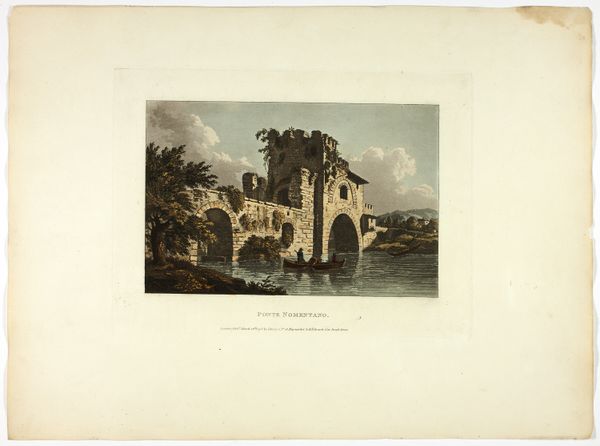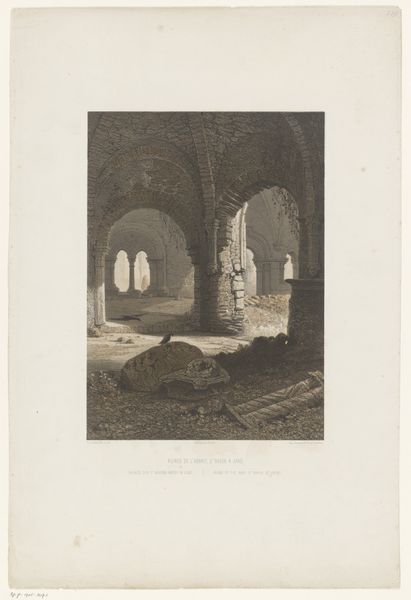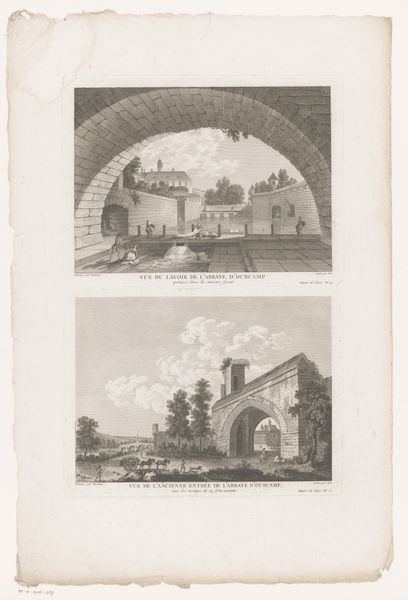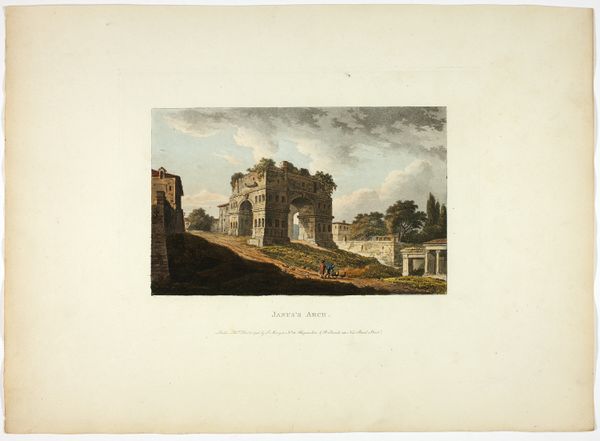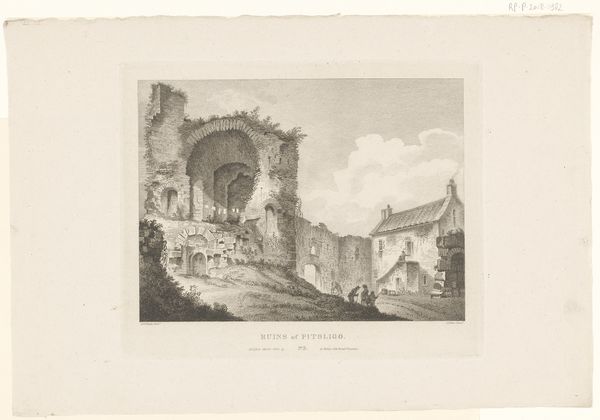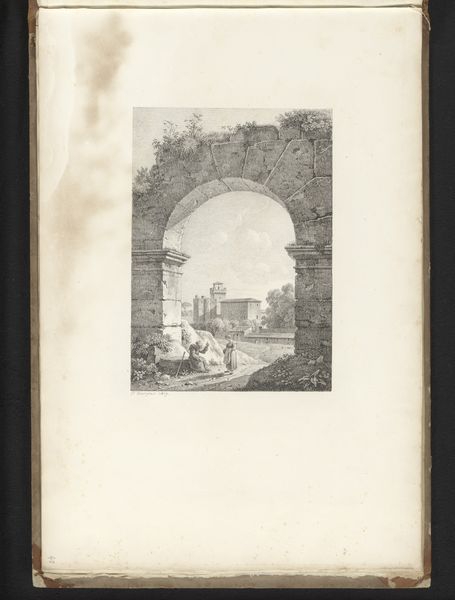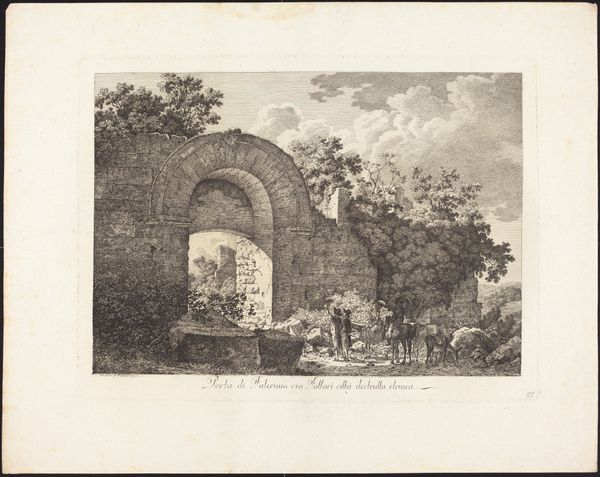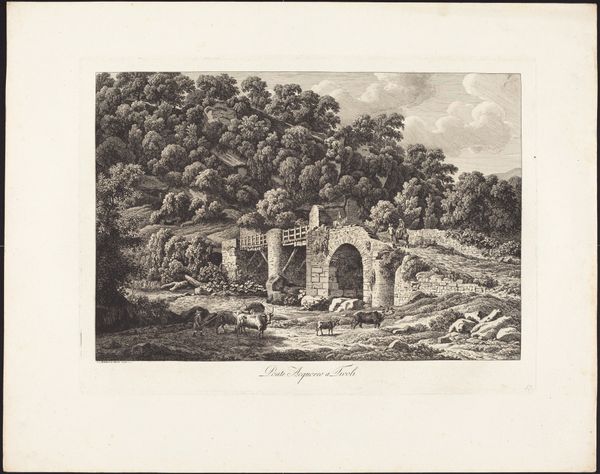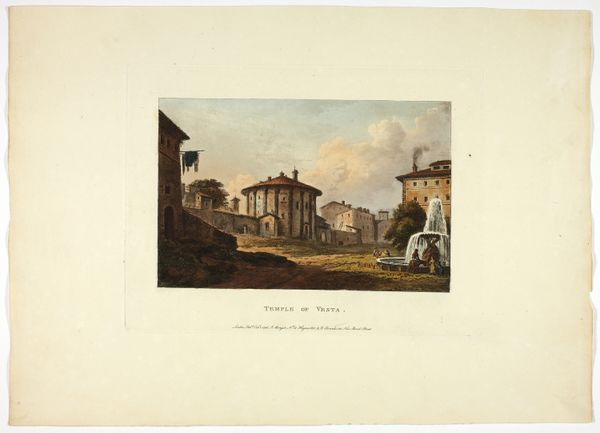
The Temple of Peace, plate nine from the Ruins of Rome c. 1796
0:00
0:00
drawing, painting, print, paper, watercolor
#
drawing
#
water colours
#
painting
# print
#
landscape
#
classical-realism
#
paper
#
watercolor
#
romanticism
#
cityscape
#
history-painting
#
academic-art
Dimensions: 448 × 330 mm (sheet)
Copyright: Public Domain
Editor: Here we have "The Temple of Peace, plate nine from the Ruins of Rome," created around 1796 by M. Dubourg. It’s a watercolor and etching printed on paper. I’m struck by how this rendering of classical ruins becomes a picturesque scene with everyday people and animals populating it. What does this piece say to you? Curator: This print offers a fascinating glimpse into the consumption of classical antiquity in the late 18th century. It's not just a depiction of ruins; it’s an artifact in itself. How was this image produced and for what purpose? Prints like these were commodities, made through skilled labor, consumed by those who perhaps could not visit Rome themselves. Editor: So it’s less about the artistic vision, and more about the means of distribution? Curator: Precisely! The etching process, the type of paper used, the watercoloring – all speak to the mechanics of producing and disseminating images. Dubourg isn't just recording the ruins; he's participating in the marketplace of ideas and aesthetics. Think about the social context: who could afford these prints, and what did owning them signify about their social status and taste? Editor: That definitely shifts my perspective. It's not just a romantic landscape; it's a manufactured object with its own history. So even the Romanticism on display is tied to consumption. Curator: Exactly. Consider also that Dubourg has roots in France. Here the traditional academic approach merges with labor intensive reproduction method. The material conditions surrounding its creation shapes what it communicates, more than simply 'beauty' or historical accuracy. What are your final thoughts? Editor: It really highlights how art isn't created in a vacuum. Seeing it as a manufactured product opens up so many questions about its role in society. Thanks, I learned so much!
Comments
No comments
Be the first to comment and join the conversation on the ultimate creative platform.
